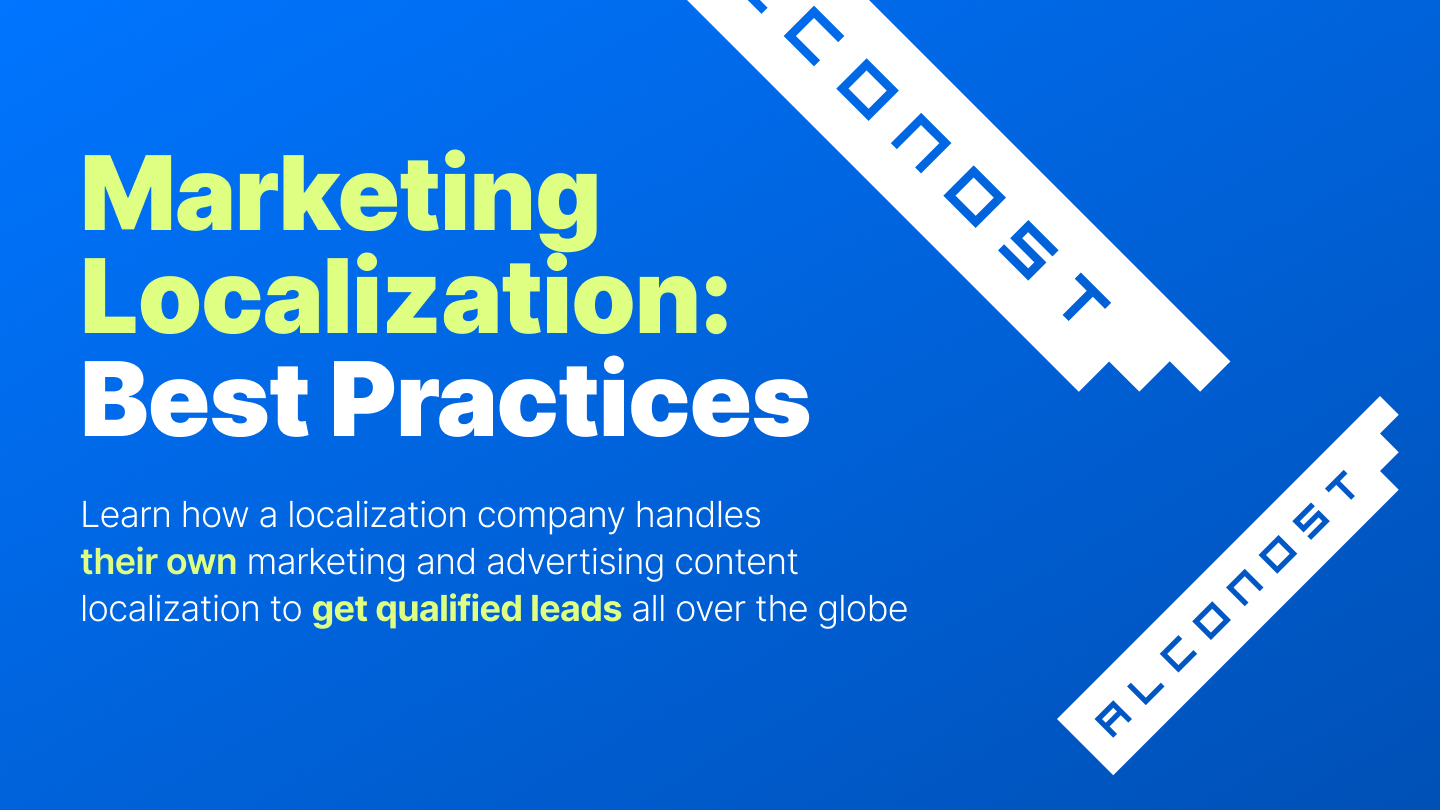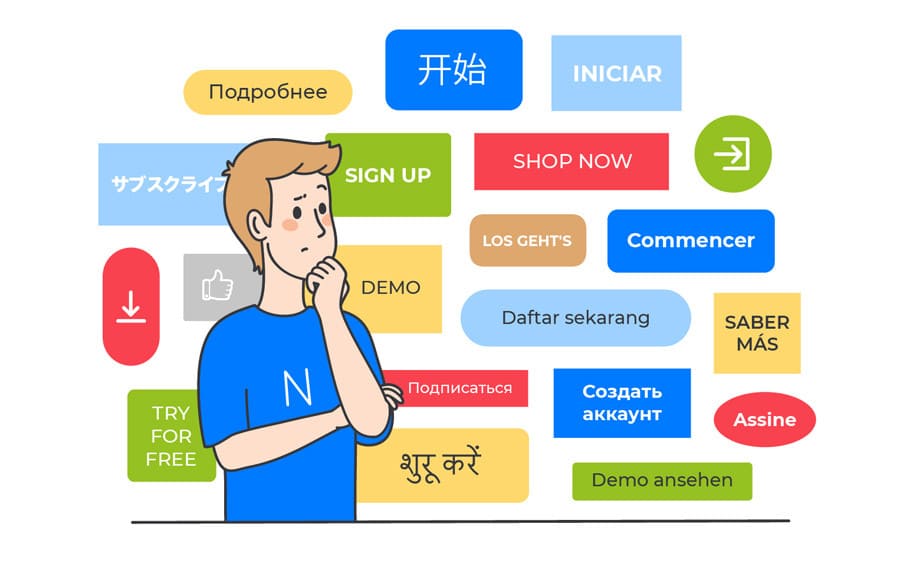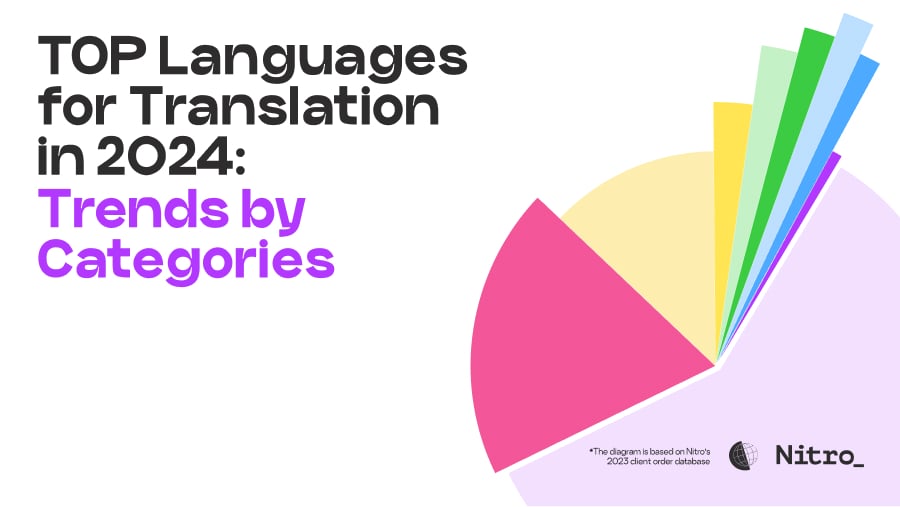Our blog is for executive teams, marketing, product, localization, and localization teams that actively support international business expansion. We share knowledge gained about localization, globalization, and culturalization to assist you in creating informed global growth strategies. Likewise, we do this by drawing on our two decades of experience running a worldwide localization company. 🌎
Have you ever had to translate content urgently but still guarantee quality and not exceed budget? It's a regular occurrence in localization, where there is constant pressure to release products quickly and at high quality without breaking the bank.
Let's dissect how to handle these challenges.
The 7 key elements that influence the timeline of a localization project
First, let's look at the top 7 things you need to understand and plan for when establishing realistic localization timelines.
- Source text volume: The time needed for localization is directly impacted by the text volume. Increased word counts result in a heavier workload that takes more time and resources to finish.
Approach: Only localize what you need to. You can minimize needless translation work and project scope by concentrating on key text passages. Think about putting high-impact content first and auxiliary content last.
- Source text quality: Poor-quality text takes longer to localize as it can have inconsistent language, ambiguities, or mistakes that should be fixed before translation.
Mitigation: Use automation to improve the grammar and clarity of the source. Editing can be streamlined with tools like grammar checkers and style guides, which guarantee that the material is polished and simpler to translate correctly.
- The required level of translation quality: Higher standards require more time, particularly when the information needs to be translated accurately, like in legal or medical translations.
Mitigation: Depending on the content type, you may be able to accept lower quality levels (like user-generated or FAQ content). Lowering the quality standards for non-essential content can save time.
- The quantity and complexity of languages: Translating into many languages—especially ones that are less widely used or more complicated—will take longer due to the requirement for specialist resources and extra review cycles.
Mitigation: Sort languages according to their market impact and distribute the rollout over time. Prioritize high-priority languages first, or for efficiency, consider combining languages with related linguistic structures.
- Project domain (the complexity of the topic): In addition to requiring more time for research and confirmation, specialized professions like the legal, technical, or medical domains call for translators with experience.
Mitigation: To prevent delays caused by a learning curve, assign translators with specialized topic knowledge. Having reference materials, style manuals, and glossaries available can further speed up the procedure.
- Technology and tools available (the correct tools can speed things up): Using the right translation tools (CAT tools, TMS, etc.) can help manage terminology, expedite processes, and guarantee consistency across the project.
Mitigation: Invest in tools for effective file handling, consistency checks, and automation. Adopt cloud-based solutions and update tools frequently for easier cooperation and quicker processing.
- Service type: Services like language testing, functional testing, and proofreading might take a lot of time, depending on the project's requirements.
Mitigation: Don't use services you might not need. For example, you can skip extra quality assurance procedures if the content is only for internal use. Setting priorities for necessary services might help maintain project momentum.
Some elements, such as the project domain, are impossible to alter or influence. Others, such as service kind, volume, or quality, can be influenced when urgent problems call for innovative solutions.
When you're pressed for time, here are some tips to help you get things done more quickly.
1. Give great instructions: Prepare a comprehensive localization kit
To cut down on back and forth and save a lot of time at project initiation, give your translation partner the following resources:
- A comprehensive glossary
- The style manual (one per language)
- Screenshots of your product in context
- Existing translation memory
- A comprehensive brief includes information about the project's goals, target audience, tone and style standards, brand context, and particular dos and don'ts (such as words or cultural allusions that should be avoided), among other things.
If you cover more ground up front, there will be fewer queries, worries, or hold-ups later on that slow down the process.
2. Scale up: expand the translation team
If you're in charge of the project, consider hiring more translators or asking for more resources if you're working with an agency.
Having several translators for a single language won't affect quality as long as everyone has access to the same glossary and translation memory. Cloud-based translation platforms can also facilitate multiple translators collaborating on a single project.
3. Scale down: reduce the number of localization services within the project.
If you have a tight timetable and are initially going to follow up localization with extensive linguistic testing across several devices, consider reducing those extra stages. Localization can provide you with a powerful target market offering, provided the agency has a robust quality assurance procedure (which we discussed in a recent issue).
Be cautious, though, since reducing services could affect quality or restrict your market reach. For instance, we do not advise omitting functional testing when translating an app into a bidirectional language with particularly complex considerations, like Arabic.
4. Choose a faster translation method
A quick automatic translation technique, such as AI-powered machine translation, might be feasible if your material is not highly branded or complex. There is no need for human post-editing if you only need the main idea. Even if you only need minor editing, it can be quicker than all-human translation.
But for crucial customer-facing material, don't rely on AI when you require human-level quality, and don't choose simple translation when you need more complex transcreation.
5. Localize less: start with essentials
First, localize the most significant and influential material. Not everything has to be translated into every language at once. For preliminary market testing, release a minimally viable localized product and translate only the most essential content to the customer experience.
You can localize the remaining materials required to completely service your new market as you have more time and money.
If you use even a handful of the following tactics, you can lessen the tension caused by seemingly insurmountable deadlines.
It can be challenging to meet strict localization deadlines without sacrificing quality or going over budget, but achieving your speed/quality/cost goals with the correct tactics is possible. You can optimize the process and increase productivity by setting clear standards, using scalable resources, and choosing what to localize. Prioritize content according to your objectives and the demands of your audience, and use technology when it makes sense. These changes can help you meet deadlines and produce a high-quality, market-ready product that satisfies client demands and advances your overarching business goals.
Alconost can help! We provide cost-effective, high-quality localization in more than 120 languages to ensure your launch goes smoothly. Get in touch to find out how we can help with your localization requirements.







